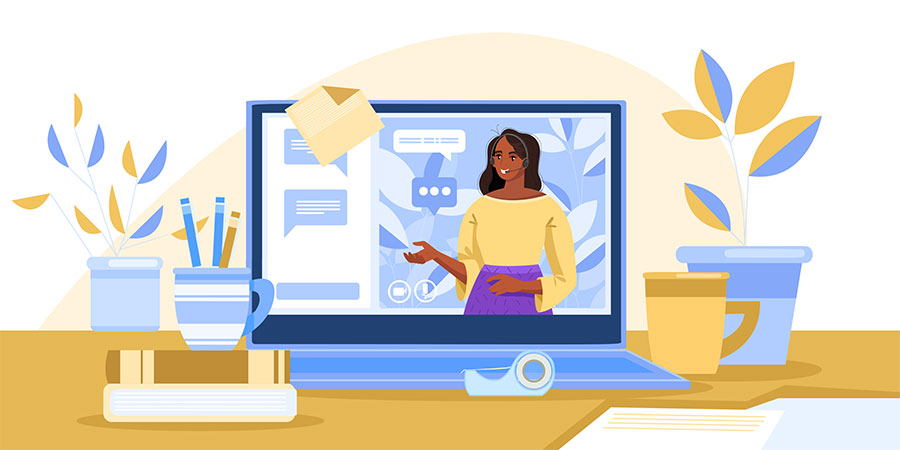
Note: For the purposes of this blog series, I will use “webinar” when I specifically mean an online context. Otherwise, “presentation” applies to both in-person and online content offerings.
Presentations are the original “content marketing.”
A talk at a senior center, the Chamber of Commerce, a local meeting of physicians or attorneys. From customer-focused to referral-focused, presentations give you the ability to get in front of a potentially fruitful audience and impress them with your eldercare expertise.
NOT sales
Like Facebook and other social media, a presentation is not intended to be an infomercial.
Unless you’ve been asked to speak on “Why hire a care manager?” or “What home care can do for you,” pitching your business is not wise during a presentation. If you promise something educational but instead spend all your time selling your services, people will leave and negatively associate you with bait-and-switch tactics.
It’s fine to mention your business at the beginning, and your years of expertise as it relates to the topic. That establishes your credibility. And at the end, it’s also fine to comment that you would be happy to assist people who would like additional help. You can even offer something free (e.g., a free initial consultation) as a thank-you for attending, although that may be off-putting to some. (That’s more common in webinars than in-person presentations, but only if the webinar is free. If people paid money or there are CEUs involved—NO sales at ALL!).
The key to drawing attention is to pick a specific problem and supply practical tips for its resolution.
The most popular titles
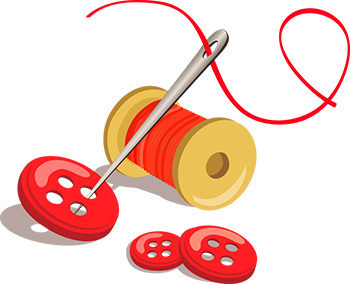 “How to …” or “Dealing with [problem].” Emphasize pragmatism.
“How to …” or “Dealing with [problem].” Emphasize pragmatism.- “3 steps to …” People love numbers! It makes a tough situation seem manageable. They get curious to see if they know all the steps already.
- “How to avoid the most common mistakes of …” This captures attention because it hints that as much as they know, there may be some things they don’t know.
- Ask a question. People can’t help but answer it in their heads. This draws them in to the topic.
Adults are problem-based learners. We have so many demands on our time—and double that if you are a family caregiver—that every moment needs to be productive. Your topic must result in saving money, time, or emotional energy. In addition, if you are speaking to referrers, your talk must help them get customers, do their job better, or look better to their clients. Match your content to your audience (and of course, your expertise).
Isn’t this giving away the store?
 Some of my clients worry that an educational talk with how-to tips will simply empower folks to handle the situation on their own. Not really. Think of it like a care package. Enough sustenance for a meal, maybe. But in a thirty- to sixty-minute presentation? Not enough for a well-balanced diet over time.
Some of my clients worry that an educational talk with how-to tips will simply empower folks to handle the situation on their own. Not really. Think of it like a care package. Enough sustenance for a meal, maybe. But in a thirty- to sixty-minute presentation? Not enough for a well-balanced diet over time.
Undoubtedly, every talk will have its dedicated do-it-yourselfers in the audience. But eldercare involves so many extenuating circumstances that while you might have some very effective tips, it quickly becomes clear that involving a person with experience and an overview of aging will smooth the road in many other ways than just the topic being presented.
And sometimes it’s educational enough to give them the overview of the questions to be asking. The answers are so variable, there isn’t a single solution. But having that overview results in the audience leaving the session much more empowered than when they entered. And they probably have a better sense of the context in which you can help.
Be strategic in content selection
The more specific you can be in your topic, the more likely your attendees will be highly interested. This is also a way to be very generous with your tips and not give away the store. Go deep with your care package, in a narrow focus.
To make your talk the most immediately productive, select an issue closer in the care trajectory to when they actually tend to purchase your services. Focus on a subject that is a precursor to many of the phone calls you get:
- Coping with irrational outbursts in a person with dementia
- A recent holiday visit reveals their parent is not doing as well as they thought
- Hoping to age in place but not sure if it’s a good idea (safe, affordable …)

You can certainly speak to a common issue that is urgent to a small segment of your audience (“Dealing with repetitive questions” or “There’s an Alzheimer’s diagnosis, now what?”). But because it isn’t typically as close to their need for you, this will be a long-term investment and definitely require follow-up strategies (e.g., monthly e-newsletters) to keep them connected the year or two that it might be before they perceive an urgent need for your services.
A general eldercare topic—”Finding a good doctor”—will help you build rapport. This is not a bad outcome for a webinar. But if you are hoping to get new clients fairly soon after your talk, you will want to speak about issues that are closer to their need for your services.
Have a service in mind
Recall I wrote earlier that at the end of your talk it’s okay to mention your ability to help. If you’ve given them some definite things they can do themselves—distraction techniques with dementia, or a list of universal design suggestions for remodeling a home—it’s fine to close by informing them that you have a service that can help them weigh ALL the issues in the context of their own unique situation.
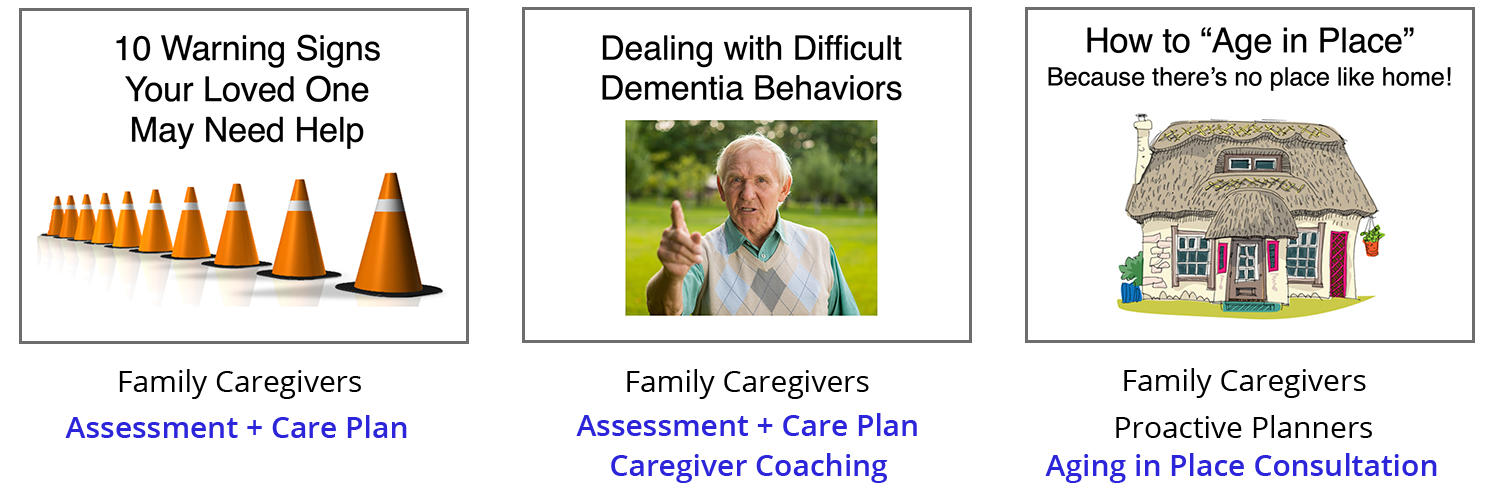
Using the examples above:
- A mid-stage dementia presentation might close by talking about caregiver coaching sessions you can do.
- “10 warning signs your loved one may need help” could give you an entrée to talk about the value of an assessment and care plan.
- “How to age in place” is a perfect lead-in to a consultation where you can help them assess their specific resources (social and financial) and discuss the various service and transportation options that would make sense given where they actually live.
Realistic expectations of a presentation
From a sales point of view, my experience in eldercare is that 10%, maybe 20%, of attendees are ready to buy at the time of a talk:
- They perceive an urgent need.
- They have the funds (if you are a private-pay service).
- They have decision-making power.
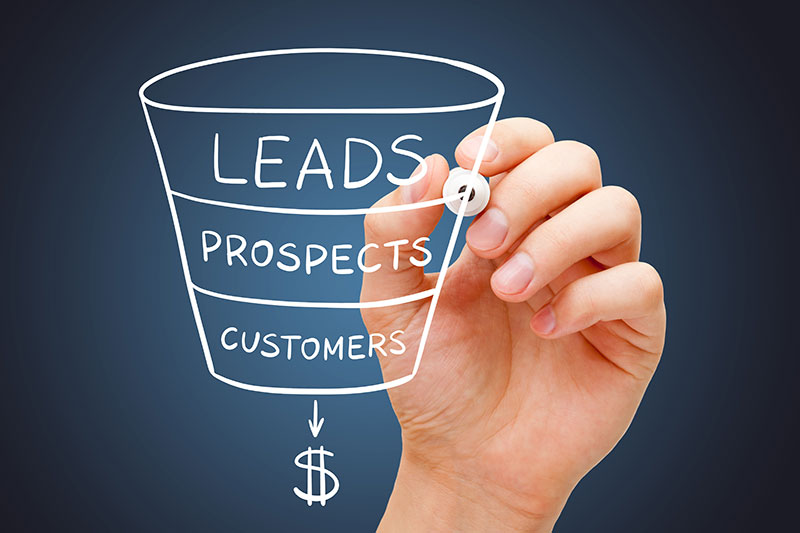 In the classic “sales funnel” of business, people with an urgent need, a budget for your services, and the authority to spend the money are called “qualified prospects.” You need to attract a lot of people first (“leads”) to end up with some qualified prospects, only a few of which will “convert” to actual customers.
In the classic “sales funnel” of business, people with an urgent need, a budget for your services, and the authority to spend the money are called “qualified prospects.” You need to attract a lot of people first (“leads”) to end up with some qualified prospects, only a few of which will “convert” to actual customers.
In subsequent blog posts, I’ll talk about the importance of promotions (attracting high-quality leads with discovery strategies) and follow-up (engaging attendees afterwards through email interactions). Priming the pump effectively and being diligent with follow-through will increase the number of attendees who actually convert to customers. If not right away, then over time. You do have options to improve your “close rate” if you approach presentations strategically.
What do you gain from a presentation?
If the sales funnel illustrates the different kinds of people you are interacting with, the Customer Journey describes the path they typically follow (and the steps you can take) to move them toward the desired outcome of becoming a client. The Customer Journey is a great way to think about the benefits of presentations.
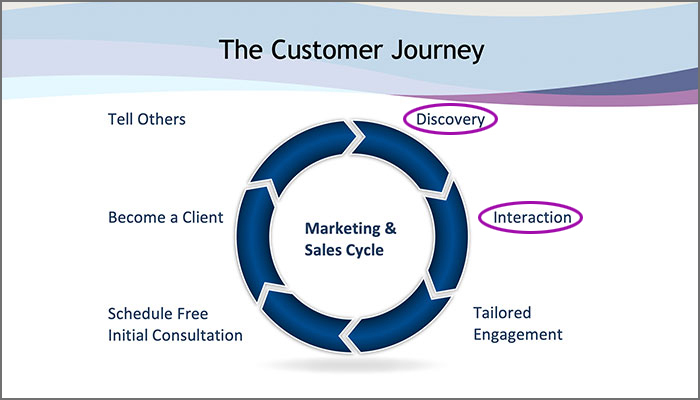
- The opportunity to speak to a new audience. Unless you dread public speaking, giving a talk about something you know very well is usually an easy way to get in front of new potential customers (leads). New people learning about you and your business—the Discovery stage of their Customer Journey—is always a good thing. (Of course to be truly effective, you need to have a way to continue contact afterward: The Interaction stage. Voilá, the e-newsletter!)
- A chance to build rapport and respect. In human communication, the words we say account for 10% of what is taken in. The other 90% involves impressions from body language, facial expression, tone of voice. All these other noncontent attributes are missing in the written word (e.g., a blog, a brochure). But they come across loud and clear in a presentation. From this, an attendee can decide whether you are a person they would like to work with, could trust, could see their parent (or clients) trusting. Watching you, potential clients or referrers intuitively assess how well you listen and respond to questions. How comfortable you seem to be with the material. How experienced you are. Compared with people who have only gone to your website or looked at your LinkedIn Profile, these nonverbals go a long way toward encouraging people to take the next step in their Customer Journey: To email you or call. This is why presentations, done strategically, have a relatively high return on investment. They provide more personal octane than do other methods.
- Expanding your email list! If a presentation is a strategy in the Discovery stage, following up by email puts you firmly in the Interaction stage. Other content marketing platforms do not make it easy for you to initiate engagement. But if someone gives you their email as a result of registering for a webinar or signing in at the door for an in-person presentation, you then have permission to email them afterward without it being considered spam. Suddenly, you can initiate. That’s a very different position.
If you’d like to have more-productive presentations, sign up for my free webinar on the topic.
(I know, a webinar about webinars!):
Strategic Use of Presentations
(and Webinars) to Gain Clients
Go to ElderPagesOnline.com/presentations-webinar to register.
